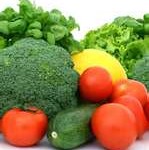New research indicates that leafy greens may be healthier than we thought. Eating vegetables like kale, spinach and collard greens may not cure glaucoma but they may be protective against developing primary open angle glaucoma(POAG). The research revealed that people who ate a lot of leafy greens had a 40 to 50 percent lower risk of acquiring POAG.
The reason these super foods offer such great protection is related to the dietary nitrate they contain. It’s thought that glaucoma impairs blood flow to the optic nerve. Nitric oxide helps regulate this flow. Since leafy greens contain high levels of nitrate, the precursor to nitric oxide, consuming them likely keeps things flowing more smoothly.
 A significant amount of other new research is currently aimed at developing therapeutics that treat glaucoma by way of nitric oxide. In fact, the FDA is reviewing at least one new medication that donated nitric oxide. But thanks to this latest study, far fewer people will need it if they load up on their leafy green vegetables before any glaucomatous damage is done.
A significant amount of other new research is currently aimed at developing therapeutics that treat glaucoma by way of nitric oxide. In fact, the FDA is reviewing at least one new medication that donated nitric oxide. But thanks to this latest study, far fewer people will need it if they load up on their leafy green vegetables before any glaucomatous damage is done.
So how much roughage do you need to eat to protect yourself from glaucoma? In this study, those who consumed the most leafy greens, averaged about 1.5 servings per day, which equates to about one and a half cups. Leafy greens include kale, spinach, dandelion greens, romaine lettuce, radicchio, leaf lettuce, arugula, Swiss chard, rapini (broccoli rabe) and collard greens.
According to the book, EyeFoods, by Drs. Campagna and Pelletier, the leafy greens are the rockstars of eye nutrients. They include lutein, zeaxanthin, beta-carotene, vitamin E, vitamin C, zinc and fiber. If you’re not accustomed to the tastes and textures of leafy green vegetables, start slowly. Begin with some lettuce leaves or spinach. Add a few leaves of kale or arugula to a salad or soup. Work your way toward at least a serving per day.
